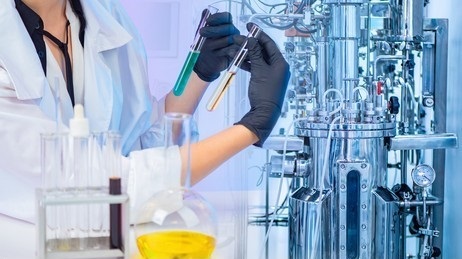Once the water environment is damaged by metal (mainly heavy metal) elements, it is difficult to restore the original state, even after perfect treatment, there will still be residues of metal elements in the water environment, which will inevitably bring some impact on the organisms living in the water body.

There are many sources of metal (mainly heavy metals) pollution in the water environment, including domestic sewage and aquatic products and industrial wastewater, especially the printing and dyeing industry and metallurgical industry will inevitably produce wastewater containing heavy metals in the production. Therefore, Lifeasible uses different methods to analyze and accurately detect different types of heavy metals in water, especially heavy metals, to achieve specific analysis.
Usually, most metal ions content in water is low, even if the detection method is sensitive, it is more difficult to determine trace elements directly, so Lifeasible also combines separation and enrichment techniques with the detection method to ensure the analytical detection limit, precision and accuracy.
| Technologies | Methods | Details |
| Spectroscopic detection techniques | Spectrophotometry | The spectrophotometric method is the use of a chromogenic agent and heavy metals complexation reaction principle. After the complexation reaction generates large molecular groups, the solution color shades will also change. So that Lifeasible can be at a specific wavelength with the help of colorimetric detection to determine the type and content of heavy metals in water samples. The method is highly accurate and sensitive and has a wide range of applications. |
| Atomic absorption spectroscopy (AAS) | AAS is the most common method used by Lifeasible to determine metals (especially heavy metals) in water and can determine the type and content of metal elements. Generally speaking, there are three main methods of AAS.
|
|
| Inductively coupled plasma mass spectrometry (ICP-MS) | This method is more efficient in analyzing heavy metals in water, and it can analyze multiple elements at the same time. The detection limit is also lower, suitable for most heavy metal detection and analysis in water. | |
| X-ray fluorescence spectrometry (XRF) | Lifeasible analyzes the type and content of heavy metals in water based on the absorption of X-rays, and the method is fast. | |
| Laser-induced breakdown spectroscopy (LIBS) | This method can be applied to rapidly detecting many heavy metals in water samples. | |
| Inductively coupled plasma atomic emission spectrometry (ICP-AES) | Lifeasible uses ICP-AES combined with ion exchange resin and solid-phase extraction enrichment to determine heavy metals in water accurately and accurately. | |
| Electrochemical detection and analysis techniques | Oscillopolarography | This method has relatively high reproducibility and sensitivity, allowing rapid analytical results. |
| Anodic dissolution voltammetry | The main advantage of this method is the continuous determination of a variety of heavy metal ions in water samples and its high sensitivity. | |
| Fluorescence analysis technique | Fluorescence analysis method | The method is divided into atomic/molecular fluorescence spectrometry types. High detection sensitivity, low detection limit, and selectivity. The determination of samples without separation, enrichment, color development, determination, and other steps can be fast to get the results. |
| Biochemical detection techniques | Enzyme inhibition | This method can determine the concentration of heavy metals by detecting light signals and can achieve online monitoring. |
| Immunoassay | This method has high sensitivity, fast detection speed, and high selectivity. | |
| The fluorescent probe detection technique | The fluorescent probe detection method | This method includes organic small-molecule fluorescent probes and nanomaterial fluorescent probes with high fluorescence intensity and good light stability. |
Metal contamination, especially heavy metals, has a severe impact on water quality and ecosystems, so Lifeasible uses various metal detection techniques to analyze various metal elements in water samples. Because each method has its strengths and characteristics, we select one or more technologies based on real-world conditions to ensure high accuracy and specificity of results. Please get in touch with our staff to see what solutions we can offer you.
Lifeasible has established a one-stop service platform for plants. In addition to obtaining customized solutions for plant genetic engineering, customers can also conduct follow-up analysis and research on plants through our analysis platform. The analytical services we provide include but are not limited to the following:
Get Latest Lifeasible News and Updates Directly to Your Inbox
Adaptive Evolutionary Mechanism of Plants
February 28, 2025
Unraveling Cotton Development: Insights from Multi-Omics Studies
February 27, 2025